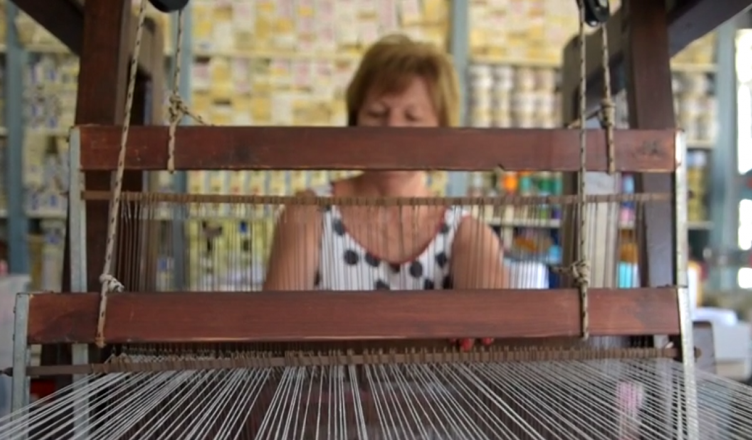In the modern technologically dominated world, traditional arts and professions gradually tend to become extinct, as the vast majority of people prefer to purchase standardized goods offered at low prices rather than handmade ones. In contrast to this tendency, fortunately there are people and organizations that try to preserve the Cultural Heritage artifacts and the way in which they are created, making them accessible to the next generation. One such typical example is the local industry “Handmade Cretan Woven” situated in Alikarnassos on the island of Crete, Greece, which still creates handmade woven textiles on a traditional wooden loom.
The team of Mingei Project visited the local industry and interviewed the owner Mrs. Karli Irene. In the beginning, the industry started to create fine hand-woven textiles always on woven looms. Concurrently, they constructed wooden looms, which they sold. Thus, all the cottage industries were started by them. Nowadays, the owner still maintains this craftsmanship, putting warps and selling threads to few weavers that still exist.

Since then, times have changed over the years, the development has made them study the market requirements and needs, and namely what is in high demand and what is more commercial in order to survive and to be competitive in the market. Consequently, they have started to create a variety of products that can be used by modern people, adjusting to their everyday needs. Specifically, at the moment they are producing wallets, purses, mats, aprons, and so on. All the products are made of 100 percent cotton and hand woven on the loom in a traditional way, contributing both to the preservation of this traditional job and to the strengthening of the local economy. Furthermore, at the instigation of the development association of women entrepreneurs of Crete, which often organizes exhibitions,the art of handicrafts is promoted. The industry also undertakes the equipment of hotels, weaving carpets, pillows, framed patterns and various other things in different patterns and colors, since they collaborate with interior designers.
To recapitulate, Mrs Irene Karli has succeeded in preserving a traditional job, which mainly flourished in the past, while at the same time she has tried to adjust it to the needs and requirements of modern societies, intertwining tradition with fashion.

